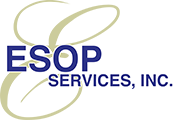In the Largest and most significant study to date, of ESOP performance in closely-held companies, Drs. Kruse and Blasi of Rutgers University, found overwhelmingly positive results.
- ESOPs increase sales, employment, and sales per employee by 2.3% to 2.4% per year over what would have been anticipated in a non-ESOP company.
- ESOPs increase sales, employment, and sales per employee by 2.3% to 2.4% per year over what would have been anticipated in a non-ESOP company.
- ESOP companies are substantially more likely to have other retirement-oriented benefit plans than comparable non-ESOP companies.
While the results are in line with previous research, no study of closely-held companies has matched the scope of this one. Their study surveyed companies establishing ESOPs between 1988 and 1994, matching companies with ESOPs to comparable non-ESOP companies. Sales and employment at these companies were compared for a period of three years before and after the plan’s start, 343 companies were represented.
The results showed that ESOP companies perform better in the post-ESOP period than their pre-ESOP performance would have predicted. The table below shows the difference in the pre-ESOP to post-ESOP period for ESOP companies on sales growth, employment growth, growth in sales per employee and average employee productivity:
Difference in Post-ESOP to Pre-ESOP Performance, change in:
2.4% Annual Sales Growth
2.3% Annual Employment Growth
2.3% Annual Growth in Sales per Employee 2.3%
4.4% Average Employee Productivity
Projected over 10 years, an ESOP company with these differentials would be a third larger than its paired non-ESOP match.
Blasi and Kruse examined whether ESOP companies stayed in business longer than the paired comparisons. The study tracked over one thousand ESOP companies from 1988 to 1999 and compared those companies to the same number of non-ESOP companies. Eleven years later, this larger group of companies survived at a higher rate. Of the companies that did disappear, they were less likely to go bankrupt.
ESOPs and Corporate Survival
| Percentage Survival Through |
ESOP Companies |
Non-ESOP Companies |
Difference |
|---|---|---|---|
| 1990 | 97.9% | 89.2% | 8.7% |
| 1993 | 91.9% | 75.9% | 16.1% |
| 1996 | 77.9% | 62.6% | 15.6% |
| 1999 | 69.6% | 54.8% | 14.8% |
The final point of comparison was whether the companies had other kinds of benefit plans
In a 1998 study by Kardas & Keogh, Washington Department of Community Trade & Economic Development and Adria Scharf, University of Washington, the average total value of all retirement accounts per employee in ESOP companies was found to be $32,213 while in non-ESOP companies it was only $12, 735.
ESOP and Benefit Plans
| Other Pension Plans | ESOP Companies |
Non-ESOP Companies |
Difference |
|---|---|---|---|
| Defined Benefit Plans | 20.1% | 4.9% | +15.2% |
| 401(k) | 33.3% | 6.2% | +21.1% |
| Non-401(k) Profit Sharing | 35.7% | 8.0% | +27.7% |
| Other Defined Contribution Plans | 14.7% | 2.3% | +12.4% |
The Rutgers Study was funded by the Foundation for Enterprise Development, The Employee Ownership Foundation, The National Center for Employee Ownership, Rutgers University and Dun & Bradstreet.
